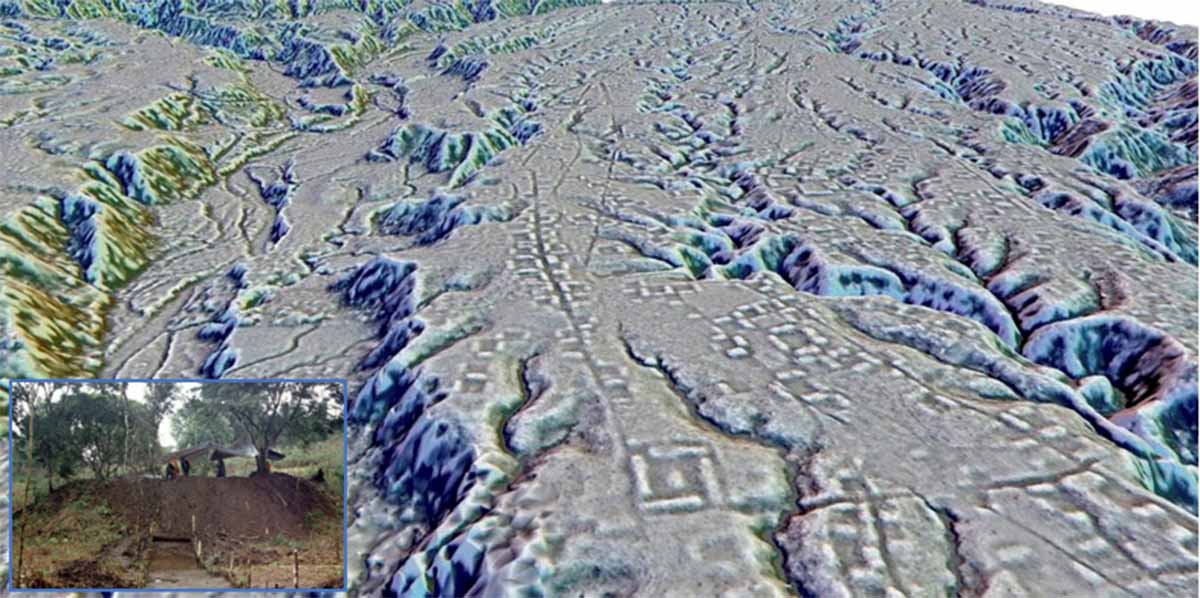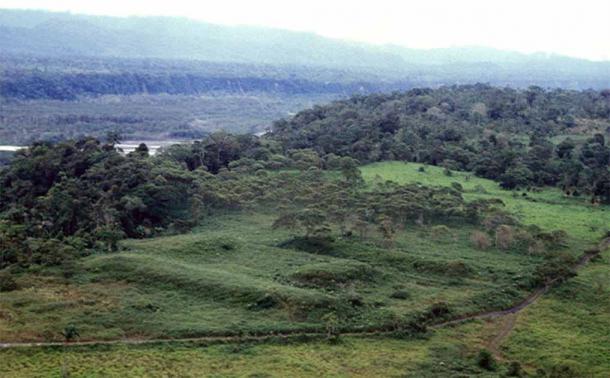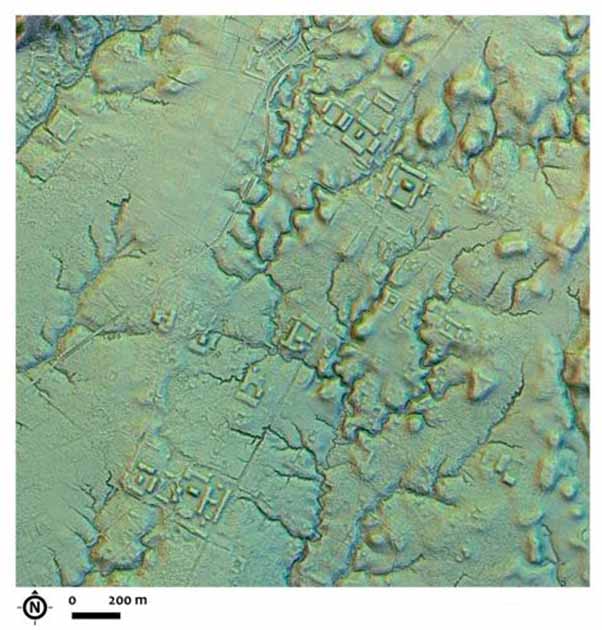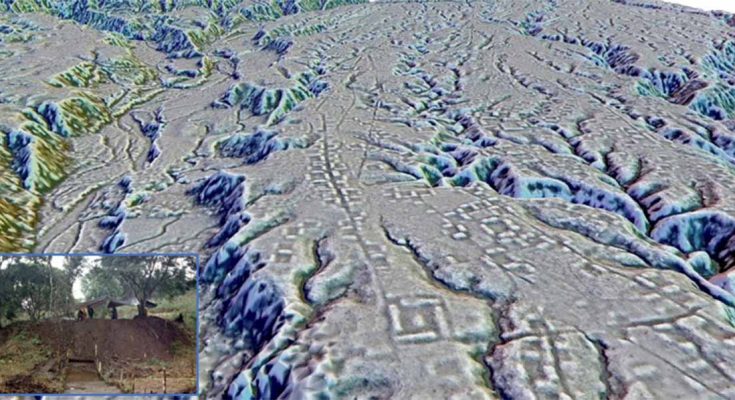An extensive civilization like nothing ever discovered before has been revealed in the Amazon jungle of Ecuador! This latest discovery is believed to be the oldest human settlement known in the Amazonian region. Laser mapping technology has unveiled a lost network of interconnected cities in Ecuador’s Upano Valley, hidden beneath the dense foliage. The largest of these pre-Hispanic urban centers and lost cities were home to at least 10,000 people around 2,000-2,500 years ago, revealing a densely populated network of settlements and connecting roadways, that were in use for at least a thousand years!

A Remarkable Landscape, Parallels With Maya Urban Systems
This anthropized landscape, featuring clusters of monumental platforms, plazas, and streets arranged in a specific pattern, is the subject of a new study published in the journal Science. The landscape is intertwined with extensive agricultural drainages and terraces, along with wide straight roads covering considerable distances. The occupation of these sites has been dated from around 500 BC to between 300 and 600 AD, a period roughly contemporaneous with the Roman Empire.
A remarkable feature of this landscape is the intricate road system spanning tens of kilometers, connecting various urban centers and forming a regional-scale network. This early and extensive development in the Upper Amazon draws parallels with similar Maya urban systems recently brought to light in Mexico and Guatemala.

Situated in the shadow of a volcano that contributed to the creation of fertile local soils, the area also faced the potential threat of societal destruction. While highland cities such as Machu Picchu in Peru were already known, the prevailing belief was that in the Amazon, people lived either nomadically or in small settlements.
“This is older than any other site we know in the Amazon. We have a Eurocentric view of civilization, but this shows we have to change our idea about what is culture and civilization,” says Prof Stephen Rostain, director of investigation at the National Centre for Scientific Research in France, who led the research.
He was quoted in an article published by Science magazine .

What’s in a Mound? Complex Society and Dense Populations
Rostain and his team initiated excavation efforts in the Upano Valley nearly 30 years ago. Concentrating on two significant settlements named Sangay and Kilamope, they uncovered mounds arranged around central plazas, pottery adorned with painted and incised lines, and sizable jugs containing remnants of the traditional maize beer known as chicha.
More than 6,000 earthen mounds supported residential and ceremonial structures, encompassed by agricultural fields featuring drainage canals. The expansive roadways, the widest measuring 33 feet (10 meters), extended for 6-12 miles (10-20km).
Although estimating populations is challenging, archaeologist Antoine Dorison, a co-author of the study from the same French institute, asserted that the site housed a minimum of 10,000 inhabitants, potentially reaching peaks of 15,000 or 30,000 individuals. This population scale is comparable to the estimated populace of Roman-era London, which was then the largest city in Britain, reports The Associated Press.
“This shows a very dense occupation and an extremely complicated society,” University of Florida archaeologist Michael Heckenberger, who was not involved in the study, told AP.
“For the region, it’s really in a class of its own in terms of how early it is.”

Anthropocenic Modifications, Labor-Intensive Society
One of the key takeaways from the study is that these scientists have conclusively demonstrated that there were a lot more people in these areas who significantly modified the landscape. This is contextually important in the larger Anthropocenic history of the Earth, as it represents a paradigm shift in the thinking about how extensively people occupied these areas.
To start with, the extensive road network would have required mud, not a general source of building and constructing for the Amazonian peoples, who had traditionally relied on stone. This would have been highly labor intensive.

Rostain mentioned that the Amazon is frequently perceived as a “pristine wilderness with only small groups of people.” However, recent discoveries have illuminated the complexity of the past. Evidence of sophisticated rainforest societies predating European contact has been uncovered in various Amazonian regions, such as Bolivia and Brazil. He emphasized the enduring diversity of people and settlements in the Amazon, stating that there has never been only one way to live in the region.
The scientists also recognized causeways with ditches on either side, which they suggest were canals designed to manage the abundant water in the region. Indications of potential threats to the cities emerged, with some ditches obstructing entrances to the settlements, possibly signifying challenges from nearby populations, reports the BBC.
The findings reveal the existence of a large and intricate society, perhaps surpassing the well-known Maya societies in Mexico and Central America. It has similarities to the Maya, but is characterized by distinct architecture, land use, and ceramics.
Several findings are described as “unique” for South America, particularly the arrangement of octagonal and rectangular platforms. The well-organized and interconnected societies are emphasized, with a mention of the long sunken roads linking the settlements.
Rostain, who had been discouraged and warned against the study at the start of his career, persevered anyway. He concluded by saying:
“… But I’m very stubborn, so I did it anyway. Now I must admit I am quite happy to have made such a big discovery.”
The full report is available online from Science magazine, DOI: 10.1126/science.adi6317.
Top image: A lidar map of the city of Kunguints in the Ecuadorian Amazon reveals ancient streets lined with houses. Source: Antoine Dorison & Stephen Rostain/ Science
By Sahir Pandey
References
Heidt, A. 2023. An ancient, massive urban complex has been found in the Ecuadorian Amazon. Available at: https://www.sciencenews.org/article/ancient-urban-complex-ecuador-amazon-laser.
Larson, C. 2023. Valley of lost cities that flourished 2,000 years ago found in Amazon. Available at: https://www.theguardian.com/science/2024/jan/11/amazon-archaeology-lost-cities-ecuador.
Kayra, O. 2023. The Amazon rainforest was once home to ancient cities – A vast network of 2,500-year-old garden cities. Available at: https://www.theguardian.com/science/2024/jan/11/amazon-archaeology-lost-cities-ecuador.
Rannard, G. 2023. Huge ancient city found in the Amazon. Available at: https://www.bbc.com/news/science-environment-67940671.
Rostain, S. et al. 2023. Two thousand years of garden urbanism in the Upper Amazon. Science, 383 (6679). Available at: https://DOI: 10.1126/science.adi6317.
Wade, L. 2023. Laser mapping reveals oldest Amazonian cities, built 2500 years ago. Available at: https://www.science.org/content/article/laser-mapping-reveals-oldest-amazonian-cities-built-2500-years-ago.



